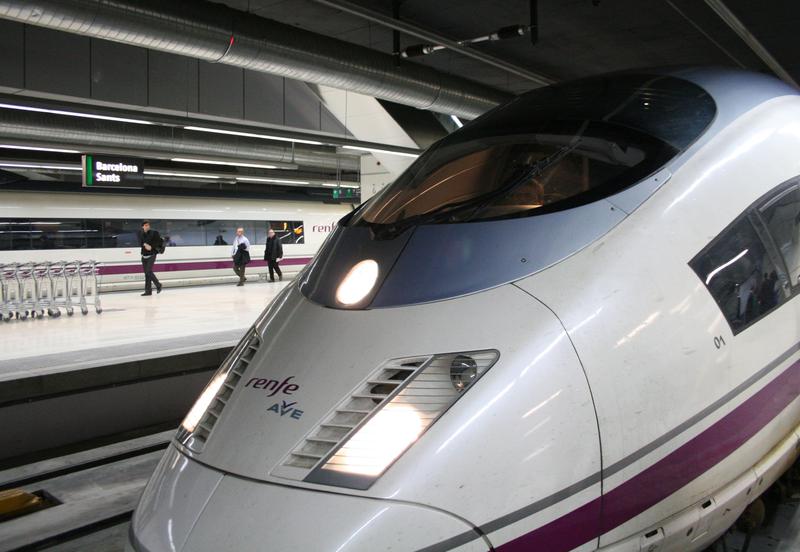Train three times as popular as plane in Barcelona-Madrid route as high-speed rail turns 15
End of monopoly in railway service lowers prices, while air option likely to stay for international connections

February 20, 2008, 6am. The first high-speed train connecting Barcelona and Madrid departed from the Catalan capital and reached the Spanish one less than three hours later – yet, despite it being a highly anticipated milestone, it was something of a bittersweet day.
There was no official inauguration, because the construction works had been marred by major disruptions to the commuter network for years, especially in the Baix Llobregat county.
It was certainly not a promising start, but the AVE service soon became mainstream, quickly gaining ground on air travel, and 15 years later it now significantly outnumbers flight services linking the two cities.
Around 75% of travelers from Barcelona to Madrid now choose the train over the airplane, with flight passengers accounting for just 25% when choosing between the two fastest options, according to statistics from the Barcelona and the Madrid local councils, CNMC market regulator and Aena, the state-owned company in charge of Spain's main airports.
With the number of users growing steadily ever since its launch, the AVE surpassed its aerial rival in 2012 and its market share stabilized at around 60% in the second half of the 2010s. In 2019, 4.3 million people booked a seat between Sants to Atocha train stations, with 2.5 million making the journey between El Prat and Barajas airports.
Yet, a quicker recovery after the pandemic and, above all, the end of the monopoly in the high-speed rail service have contributed to train use skyrocketing.
In late 2020, Spain accepted allowing private businesses to operate on the line, following EU guidelines – until then, only state-owned Renfe and its brand, AVE, had been able to use the high-speed infrastructure.
In May 2021, France's Ouigo became the first private company to cover the service, with Renfe reacting with a low-cost branch, Avlo, one month later – Iryo, from Italy, became the third operator in November 2022.
Prices plummeted as a result and, in 2021, 3.1 million people used either AVE, Ouigo or Avlo, surging by 164% compared to the prior year – meanwhile, 1.01 million travelled by plane, a much slower Covid recovery of 34% on 2020.
While official data for high-speed trains is not available in 2022, Catalan News estimates that 3.68 million people used the railway link from January to September, three times more than the 1.2 million flight passengers.
Talking to the Catalan News Agency (ACN), the director of Terminus Centre d'Estudis del Transport research center, Joan Carles Salmerón, said the train has "won the battle" over the plane and is likely to widen the gap even more.
However, he argued that high-speed trains should also reach Barcelona's airport, because the tracks are very close to the facility.
Given that it is currently not the case, Salmerón believes the flight route between the Catalan capital and Madrid –also known as the 'pont aeri' or 'aerial bridge'– will remain in place to make international connections easier.
While he thinks flights that can be easily covered with trains such as Barcelona-Madrid should tend to be eliminated, Barcelona's Chamber of Commerce director for infrastructure, Alícia Casart, told ACN that she believes freedom to choose the means of transport should remain.
In January 2020, Barcelona's local council stirred debate when councilor Eloi Badia suggested that flights between Barcelona and Madrid be scrapped in favor of train travel: "We think emitting CO2 is not necessary when there is an alternative train link."
Catalan News recently published a Filling the Sink podcast episode with a comprehensive guide on the high-speed train connections from Catalonia: